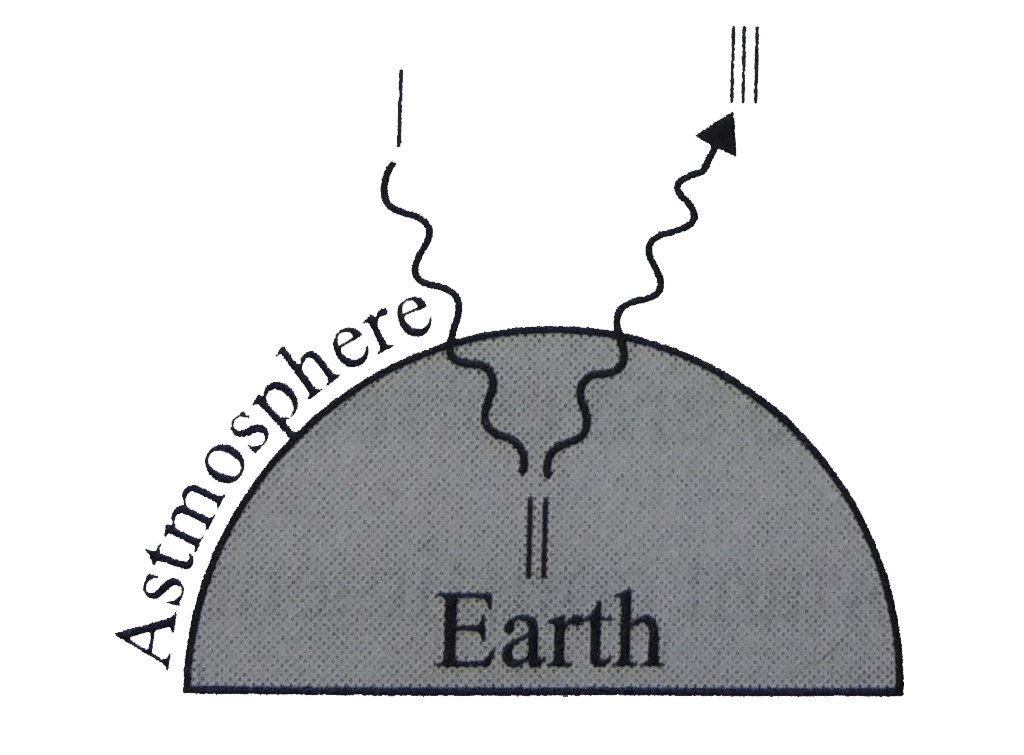UV radiation and IR radiation have the range
{:("UV Radiation","IR Radiation"),("more than 100nm","less than 400 nm"):}
{:("UV Radiation","IR Radiation"),("less than 400 nm","more than 700nm"):}
{:("UV Radiation","IR Radiation"),("equal to 400 nm","equal to 700 nm"):}
{:("UV Radiation","IR Radiation"),("less than 100 nm","more than 100 nm"):}
The correct Answer is:B
To determine the ranges of UV (ultraviolet) radiation and IR (infrared) radiation, we can follow these steps:
1. Understanding UV Radiation:
- UV radiation is part of the electromagnetic spectrum that has wavelengths shorter than visible light.
- The visible light spectrum ranges from approximately 400 nm (violet) to 700 nm (red).
- Therefore, UV radiation has wavelengths that are less than 400 nm.
2. Understanding IR Radiation:
- IR radiation is part of the electromagnetic spectrum that has wavelengths longer than visible light.
- Since the visible light spectrum ends at about 700 nm (red), IR radiation starts from this point and extends to longer wavelengths.
- Thus, IR radiation has wavelengths greater than 700 nm.
3. Summarizing the Ranges:
- UV Radiation: Wavelengths less than 400 nm.
- IR Radiation: Wavelengths greater than 700 nm.
4. Conclusion:
- The ranges for UV and IR radiation can be summarized as:
- UV radiation: Less than 400 nm
- IR radiation: More than 700 nm
Final Answer:
- UV radiation has a range of less than 400 nm, and IR radiation has a range of more than 700 nm.
---
- UV radiation is part of the electromagnetic spectrum that has wavelengths shorter than visible light.
- The visible light spectrum ranges from approximately 400 nm (violet) to 700 nm (red).
- Therefore, UV radiation has wavelengths that are less than 400 nm.
- IR radiation is part of the electromagnetic spectrum that has wavelengths longer than visible light.
- Since the visible light spectrum ends at about 700 nm (red), IR radiation starts from this point and extends to longer wavelengths.
- Thus, IR radiation has wavelengths greater than 700 nm.
- UV Radiation: Wavelengths less than 400 nm.
- IR Radiation: Wavelengths greater than 700 nm.
- The ranges for UV and IR radiation can be summarized as:
- UV radiation: Less than 400 nm
- IR radiation: More than 700 nm
- UV radiation has a range of less than 400 nm, and IR radiation has a range of more than 700 nm.
Similar Questions
UV and IR radiations are nutural radiations wheras, ___________ and radiations from atomic energy plants are artificial radiations.
View SolutionFor the 'greenhouse effect' consider statements I to III

(I) Sunlight is recived by earth. Some incomintg radiations are reflected back into space by the atmosphere and some is aborbed such as certain UV light by stratosphere ozone.
(II) Earth's surface emits IR radiations.
(III) Emitted IR radiation are less intense than that emitted by earth's surface. CO2 along with IR radiations warm the atmosphere.
Select the correct statement:View Solution
Knowledge Check
- Question 1 - Select One
UV radiation causes
AMelanomaBAgening of skinCCataractDAll - Question 2 - Select One
UV radiations cause
AFormation of thymine dimersBDeletion of base pairsCMethylation of baseDAdditon of base pairs - Question 3 - Select One
Assertion : If U.V radiations and infrared radiations fall on a metal plate, stopping potential would be grater for infrared radiations.
Reason : Maximum kinetic energy of photoelectrons is inversely proportional to the frequency of incident radiation.AIf both assertion and reason are correct and reason is a correct explanation of the assertion.BIf both assertion and reason are correct but reason is not the correct explanation of assertion.CIf assertion is correct but reason is incorrectDIf both assertion and reason are incorrect.
Visible part of electromagnetic spectrun consists of radiations having a wavelength in the range of
View SolutionUV radiations bring about
View SolutionUV radiations bring about
View SolutionUV radiations bring about
View SolutionWhich of the following is/are the harmful effect(s) of UV radiation?
It causes mutation in the cell.
UV radiation leads to ageing of skin.
It kills many phytoplanktons.
It causes global warming.View Solution

